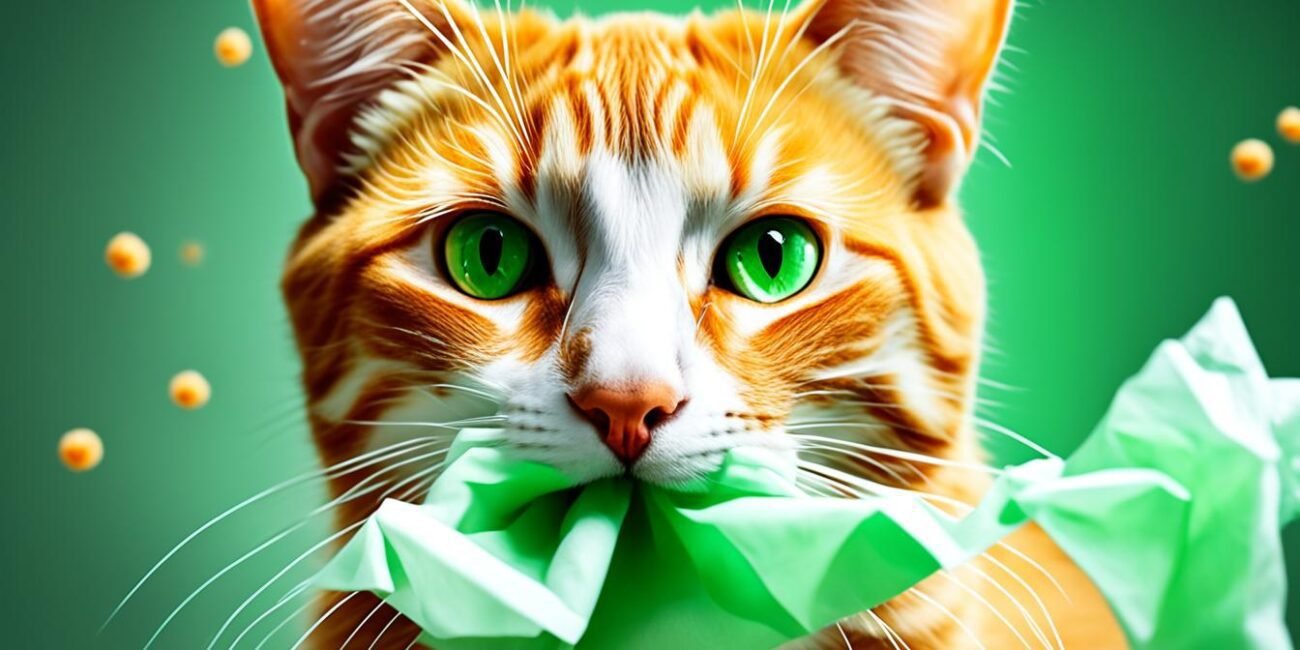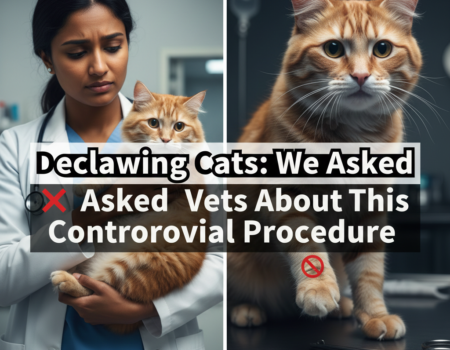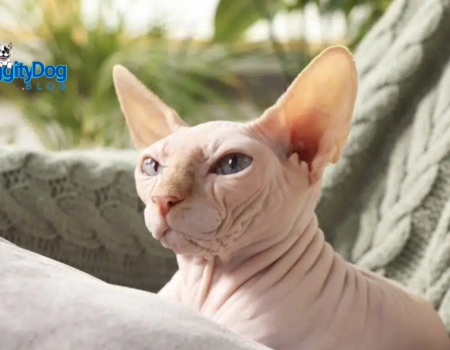As the famous poet and playwright George Bernard Shaw once said, “Animals are such agreeable friends – they ask no questions; they pass no criticisms.”
When it comes to our beloved feline friends, it’s essential to keep a close eye on their health. Just like humans, cats can experience respiratory infections, commonly referred to as “cat colds.” These viral infections can cause symptoms such as coughing, sneezing, and discharge from the eyes or nose. So, can cats catch a cold? Let’s explore this question and gain valuable insights into feline respiratory infections.
Key Takeaways:
- A “cat cold” is a term used to describe a group of symptoms caused by viral infections in cats.
- The most common viral infections that cause cat colds are feline herpesvirus and feline calicivirus.
- Cat colds can be highly contagious and are often transmitted between cats in close contact.
- Proper diagnosis and treatment, along with providing a stress-free environment, are crucial for managing cat colds.
- Prevention methods such as vaccinations and minimizing contact with infected cats can help prevent colds in cats.
Symptoms of Cat Colds
Cats can experience a range of symptoms when they have a cold. These symptoms, often referred to as cat cold symptoms, can vary in severity and duration. It’s important to be aware of these symptoms in order to provide appropriate care and support for your feline friend.
Cat cold symptoms may include:
- Coughing
- Sneezing
- Discharge from the eyes or nose
- Lethargy
- Sometimes fever
These symptoms can be similar to those experienced by humans when we have a cold. However, it’s important to remember that cats and humans have different immune systems, and the viruses that cause colds in cats are not the same as the ones that affect humans.
Most cats recover from these symptoms within 7-10 days, but it’s not uncommon for some cats to experience complications such as secondary bacterial infections or pneumonia. These complications may prolong the recovery process and require additional veterinary care.
If you notice any of these symptoms in your cat, it’s important to monitor their condition closely and consult with a veterinarian if necessary. Early intervention and appropriate treatment can help alleviate discomfort and prevent further complications.
Causes of Cat Colds
Feline herpesvirus and feline calicivirus are the most common causes of cat colds. These viral infections can be highly contagious, especially in environments where multiple cats are housed together, such as shelters or rescue facilities. It’s important to note that while these viruses can easily spread among cats, they are not contagious to humans.
When cats come into contact with an infected cat’s bodily fluids, such as sneezing or discharge, they can contract the feline herpesvirus or feline calicivirus. These viruses can also be transmitted through shared litter boxes, food bowls, or grooming activities.
Once a cat is infected, the virus can remain dormant in their body, periodically causing flare-ups of symptoms during times of stress or illness.
“Feline herpesvirus and feline calicivirus are highly contagious cat illnesses. It’s important for cat owners to be aware of these viruses and take precautions to prevent the spread.”
Prevention Measures
Preventing the spread of feline herpesvirus and feline calicivirus involves implementing proper hygiene practices and minimizing contact between infected and uninfected cats. Here are some preventative measures:
- Isolate infected cats: Keep infected cats separated from healthy cats to prevent the transmission of the viruses.
- Practice good hygiene: Regularly wash hands after handling different cats and disposing of materials in contact with infected cats.
- Vaccination: Ensure that all cats are up to date with their vaccinations to protect against these viral infections.
- Environmental cleanliness: Regularly clean litter boxes, food bowls, and bedding to reduce the risk of transmission.
By following these preventive measures, cat owners can minimize the chances of their feline companions contracting feline herpesvirus or feline calicivirus and experiencing the associated cold-like symptoms.
Diagnosing Cat Colds
Veterinary diagnosis plays a crucial role in identifying and treating cat colds. The diagnosis process involves a comprehensive examination of the cat’s overall health and a thorough review of its medical history. To accurately diagnose a cat cold, veterinarians may recommend various diagnostic tests, including routine evaluations and specific screening procedures.
In some cases, routine diagnostic tests such as a complete blood count (CBC) or a chest X-ray may be performed to assess the cat’s overall health and rule out other underlying conditions. These tests provide valuable insights into the cat’s immune response and help identify potential complications or secondary infections.
However, to determine the specific viral or bacterial agent causing the cat cold symptoms, additional tests may be necessary. One such test is the upper respiratory PCR (Polymerase Chain Reaction) panel, which is conducted using swabs collected from the cat’s eyes and nose. This specialized diagnostic tool detects and identifies the genetic material of the causative agents, such as feline herpesvirus or feline calicivirus, providing valuable information for targeted treatment.
| Diagnostic Tests for Diagnosing Cat Colds | Benefits |
|---|---|
| Routine evaluations (complete blood count, chest X-ray) | – Assess overall health status – Rule out other underlying conditions – Identify potential complications or secondary infections |
| Upper respiratory PCR panel | – Detect specific viral or bacterial agents – Provide targeted treatment approach – Help prevent transmission to other cats |
Early and accurate diagnosis is essential in treating cat colds effectively. By identifying the specific causative agents, veterinarians can tailor treatment plans and implement appropriate measures to prevent the spread of the infection to other cats.
Treating Cat Colds
Mild cases of cat colds can often be managed at home without the need for medical treatment. There are several remedies that you can try to help alleviate your cat’s symptoms and promote a speedy recovery.
- Steam Therapy: Steam therapy can help your cat by opening up their airways and relieving congestion. You can create a steamy environment by running a hot shower in the bathroom and allowing your cat to breathe in the warm, moist air. Be sure to supervise your cat during this process and make sure they don’t come into direct contact with the hot water.
- Humidifiers: Using a humidifier in your cat’s environment can also help to moisturize their airways and reduce nasal congestion. Set up a humidifier in the room where your cat spends the most time, and make sure to clean and maintain it regularly to prevent the growth of mold or bacteria.
- Reducing Stress: Stress can weaken a cat’s immune system and make it harder for them to fight off the cold. Create a calm and stress-free environment for your cat by providing a quiet space and minimizing any sources of anxiety or disruption.
While these remedies can be effective for managing mild cases of cat colds, it’s important to note that severe cases or cases with secondary bacterial infections may require veterinary intervention. If your cat’s symptoms worsen or if you’re unsure about the severity of their condition, it’s always best to consult with a veterinarian for proper diagnosis and treatment.
Quote:
“Mild cat colds can often be effectively managed at home with remedies such as steam therapy, humidifiers, and stress reduction.”
| Treatment | Description |
|---|---|
| Steam Therapy | Creating a steamy environment to help open up the airways and relieve congestion |
| Humidifiers | Using humidifiers to moisturize the airways and reduce nasal congestion |
| Reducing Stress | Creating a calm and stress-free environment to support the immune system |
Recovery and Management of Cat Colds
After a cat has been diagnosed with a cold, the next step is to focus on their recovery and overall management of the symptoms. With proper care and attention, most healthy cats are able to recover from a cat cold within 7-10 days without requiring medical intervention. However, in more severe cases, the recovery period may be longer and require additional care and treatment.
To ensure a smooth recovery, it’s important to provide a comfortable and stress-free environment for your cat. Create a warm and cozy space with soft bedding where they can rest and recover. Keep their living area clean and avoid exposing them to cold drafts or extreme temperature changes.
During this time, it’s also crucial to monitor your cat’s appetite and hydration levels. Offer them easily digestible and nutritious food, and make sure they have access to fresh water at all times. If their appetite decreases or they show signs of dehydration, it may be necessary to consult with a veterinarian for further guidance.
Another crucial aspect of managing cat colds is preventing future occurrences. Vaccinations play a key role in safeguarding your cat against common viral infections that can cause colds. Regular vaccinations can help build their immunity and reduce the likelihood of contracting these illnesses.
Furthermore, practicing good hygiene and minimizing contact with other cats can also help prevent the spread of viral infections. Regularly clean and disinfect their litter boxes, food dishes, and bedding. If you have multiple cats, ensure they have separate food and water bowls to avoid any potential transmission of viruses. Additionally, it’s important to isolate any new cats or kittens from the rest of your feline household until they have been thoroughly checked by a veterinarian.
By following these preventive measures and providing proper care during the recovery period, you can effectively manage cat colds and reduce the risk of future occurrences. Remember, a healthy and stress-free environment, coupled with timely vaccinations, are the key pillars in promoting your cat’s well-being and respiratory health.
Throughout the recovery period, remember to monitor your cat closely and consult with a veterinarian if their symptoms worsen or persist beyond the expected recovery time. With the right care and attention, your feline friend will be back to their happy and healthy selves in no time!
How Can I Treat My Cat’s Cold at Home?
If your cat is still able to perform essential daily functions, such as eating, drinking, urinating, and defecating normally, you can help them recover at home. There are several home remedies and treatments that can provide relief for your cat’s cold symptoms.
1. Steam Therapy
Image Source: Steam therapy for cat colds
If your cat is experiencing nasal congestion, steam therapy can help relieve their airway irritation. Take your cat into the bathroom and close the door. Run a hot shower to create steam, and let your cat inhale the warm, moist air for about 10-15 minutes. Be sure to supervise your cat during this process to ensure their safety.
2. Humidifier
Image Source: Humidifier for cat colds
Using a humidifier in your home can also help relieve your cat’s airway irritation. The added moisture in the air can soothe their respiratory system and make breathing easier. Place the humidifier in a room where your cat spends most of their time, and follow the manufacturer’s instructions for optimal use.
3. Stress Reduction
Cats can experience increased stress levels during a cold, which can hinder their recovery. Create a calm and peaceful environment for your cat by providing a cozy spot for them to rest, away from loud noises and disruptions. Additionally, ensure that they have access to their favorite toys, regular playtime, and plenty of love and affection to alleviate their stress.
Remember, while these home treatments can help relieve your cat’s cold symptoms, it’s important to monitor their condition closely. If your cat’s symptoms worsen or persist for more than a week, it’s recommended to consult with a veterinarian for further evaluation and guidance.
How Do Indoor Cats Get Colds?
Even though indoor cats are less exposed to the outside world, they can still catch colds. The transmission of cat colds, caused by the feline herpesvirus or feline calicivirus, can occur within the confines of their own homes. These viruses are highly contagious among cats and can easily spread in multi-cat households or in shelters where cats interact closely with each other.
To prevent colds in indoor cats, it is important to minimize their contact with other cats, especially those showing signs of illness. Keep a close eye on their interactions and separate any sick cats to avoid transmission. Additionally, regular vaccination is crucial in protecting your cat against common respiratory viruses.
Proper vaccination helps build your cat’s immune system and reduces the risk of contracting colds or other contagious diseases. Consult with your veterinarian to determine the appropriate vaccination schedule for your indoor cat.
Does Lysine Help Cats with Colds?
Lysine is an amino acid that has gained popularity as a potential treatment for cat colds. It is believed to interfere with the replication of the feline herpesvirus, one of the common causes of respiratory infections in cats. While lysine may not directly cure cats of colds, it is thought to help reduce the severity and duration of symptoms.
According to veterinary professionals, lysine supplementation can be recommended for cats with feline herpesvirus infections. By inhibiting viral replication, lysine may help to control the viral load and alleviate the respiratory symptoms associated with the infection. However, it is important to note that the efficacy of lysine in treating cat colds is still a subject of debate among experts.
Before starting any lysine supplementation, it is crucial to consult with a veterinarian. They can assess your cat’s specific health condition and recommend the appropriate dosage of lysine, if necessary. Additionally, a veterinarian can provide guidance on potential drug interactions or other considerations.
Please note: This article does not constitute medical advice. Always consult with a qualified veterinarian for personalized recommendations for your cat’s health.
The Controversy Around Lysine for Cat Colds
While some studies suggest that lysine supplementation can be beneficial for managing cat colds, other research has questioned its effectiveness. A comprehensive review published in the Journal of Feline Medicine and Surgery concluded that evidence supporting the use of lysine for treating feline herpesvirus infections is limited and inconsistent. Further research is needed to establish a conclusive answer.
The controversy surrounding lysine for cat colds underscores the importance of consulting with a veterinarian. They can provide accurate and up-to-date information based on the latest research and clinical experience. Working together with a veterinarian will ensure that your cat receives the most appropriate and effective treatment for their respiratory symptoms.
Other Options for Managing Cat Colds
In addition to lysine supplementation, there are other strategies that can help manage cat colds and alleviate symptoms:
- Provide your cat with a warm and comfortable environment. This can help soothe their respiratory system and promote healing.
- Ensure your cat stays hydrated by offering fresh water and wet food, which can help soothe their throat.
- Consider using a humidifier to moisturize the air and ease any congestion or dryness.
While these measures can provide relief, it is crucial to monitor your cat’s condition closely. If their symptoms worsen or persist, or if they develop additional health issues, it is essential to seek veterinary care promptly.
| Lysine for Cat Colds: Pros | Lysine for Cat Colds: Cons |
|---|---|
| May reduce severity and duration of symptoms | Efficacy is still debated and inconclusive |
| Lysine interferes with feline herpesvirus replication | Effectiveness may vary depending on the individual cat |
| Can be recommended by veterinarians for respiratory infections | Potential for drug interactions or other considerations |
How Can I Help My Cat Breathe Easier?
During a cat’s cold, it can be challenging for them to breathe comfortably. As a caring pet owner, there are a few things you can do to provide relief and create a conducive environment for your cat’s respiratory health.
Create a Warm and Humid Environment
A warm and humid environment can help soothe your cat’s irritated airways and make breathing easier. Consider using a humidifier in the room where your cat spends most of their time. Alternatively, you can provide steam therapy by allowing your cat to spend a few minutes in the bathroom while the hot shower is running. The steam helps to moisturize the air and loosen congestion, providing immediate relief.
Keep the Air Clean and Free of Bacteria
Clean air is essential for your cat’s respiratory health, especially during a cold. Regularly dust and clean your home to minimize the presence of allergens and irritants in the air. Use pet-friendly cleaning products to ensure that harmful chemicals don’t worsen your cat’s symptoms. Additionally, ensure proper ventilation in your home to maintain fresh air circulation.
Provide Plenty of Fresh Water
Hydration is crucial for cats with colds, as it helps alleviate congestion and thin out mucus. Ensure your cat has access to fresh water at all times. Consider using a wider water bowl to make it easier for your cat to drink if they have nasal congestion. Additionally, you can try placing extra water bowls around your home to encourage hydration.
Gently Clean Your Cat’s Face
Cats with colds may have discharge around their eyes and nose, which can cause discomfort and difficulty breathing. Gently clean your cat’s face with a soft, damp cloth to remove any crust or discharge. Be careful not to apply pressure or irritate their sensitive areas. This simple act of cleaning can provide immediate relief and improve your cat’s breathing.
By implementing these measures, you can help your cat breathe easier and promote their respiratory health during a cold. Remember to monitor your cat’s symptoms closely and consult a veterinarian if their condition worsens or doesn’t improve within a reasonable timeframe.
| Ways to Help Your Cat Breathe Easier During a Cold | |
|---|---|
| Actions | Benefits |
| Create a warm and humid environment | Aids in soothing irritated airways and loosening congestion |
| Keep the air clean and free of bacteria | Reduces potential irritants and allergens in the air |
| Provide plenty of fresh water | Helps thin out mucus and keeps your cat hydrated |
| Gently clean your cat’s face | Removes crust and discharge, improving breathing comfort |
In the next section, we will discuss when it is necessary to seek veterinary care for your cat’s cold and how a veterinarian can provide the appropriate treatments and medications.
When Should I See a Vet for My Cat’s Cold?
If your cat is showing signs of a cold, it’s important to monitor their symptoms closely. In most cases, mild cold symptoms will improve within 5-7 days with proper care at home. However, if your cat’s symptoms worsen or don’t improve within this timeframe, it is recommended to seek veterinary care. A veterinarian will be able to provide a proper diagnosis and recommend appropriate treatments or medications.
There are certain signs that indicate the need for immediate veterinary attention. If your cat exhibits signs of dehydration, such as dry gums or excessive thirst, it is important to consult with a vet. Difficulty breathing, such as rapid or labored breathing, is another serious symptom that should not be ignored. Refusal to eat or severe loss of appetite can also be a cause for concern and should prompt a visit to the vet.
Veterinary care for cat colds may involve diagnostic tests, such as a complete blood count or a chest X-ray, to assess the severity of the infection. Depending on the specific symptoms and the presence of any complications, your vet may prescribe antibiotics to treat secondary bacterial infections or recommend hospitalization for more intensive care. Prompt veterinary intervention can help ensure a speedy recovery and prevent the development of more serious complications.
FAQ
Can cats catch a cold?
Yes, cats can catch a cold. A “cat cold” refers to a group of symptoms caused by a viral infection.
What are the symptoms of cat colds?
Symptoms of cat colds include coughing, sneezing, discharge from the eyes or nose, lethargy, and sometimes fever.
What causes cat colds?
Cat colds are most commonly caused by viral infections, such as feline herpesvirus and feline calicivirus.
How are cat colds diagnosed?
Veterinary diagnosis of cat colds involves a thorough examination and, in some cases, routine diagnostic tests such as a complete blood count or chest X-ray.
How are cat colds treated?
Mild cases of cat colds can be managed at home with home remedies, while severe cases or those with secondary bacterial infections may require antibiotics or hospitalization.
How long does it take for a cat to recover from a cold?
Most healthy cats recover from a cat cold within 7-10 days without medical intervention, but severe cases may require additional care and a longer recovery period.
How can I treat my cat’s cold at home?
Home treatments for cat colds include steam therapy, using a humidifier, and reducing stress in the home environment.
How do indoor cats get colds?
Indoor cats can get colds from exposure to feline herpesvirus or feline calicivirus, which are common among cats. Minimizing contact with other cats and ensuring proper vaccination can help prevent colds in indoor cats.
Does lysine help cats with colds?
Lysine, an amino acid, may help reduce the severity of symptoms caused by feline herpesvirus. However, it’s important to consult with a veterinarian before giving lysine to your cat.
How can I help my cat breathe easier during a cold?
To help your cat breathe easier during a cold, you can create a warm and humid environment using a humidifier or steam therapy. Keeping the air clean, providing fresh water, and gently cleaning their face can also provide relief.
When should I see a vet for my cat’s cold?
If your cat’s cold symptoms worsen or don’t improve within 5-7 days, or if they exhibit signs of dehydration, difficulty breathing, or refusal to eat, it is recommended to consult with a veterinarian.










No Comment! Be the first one.